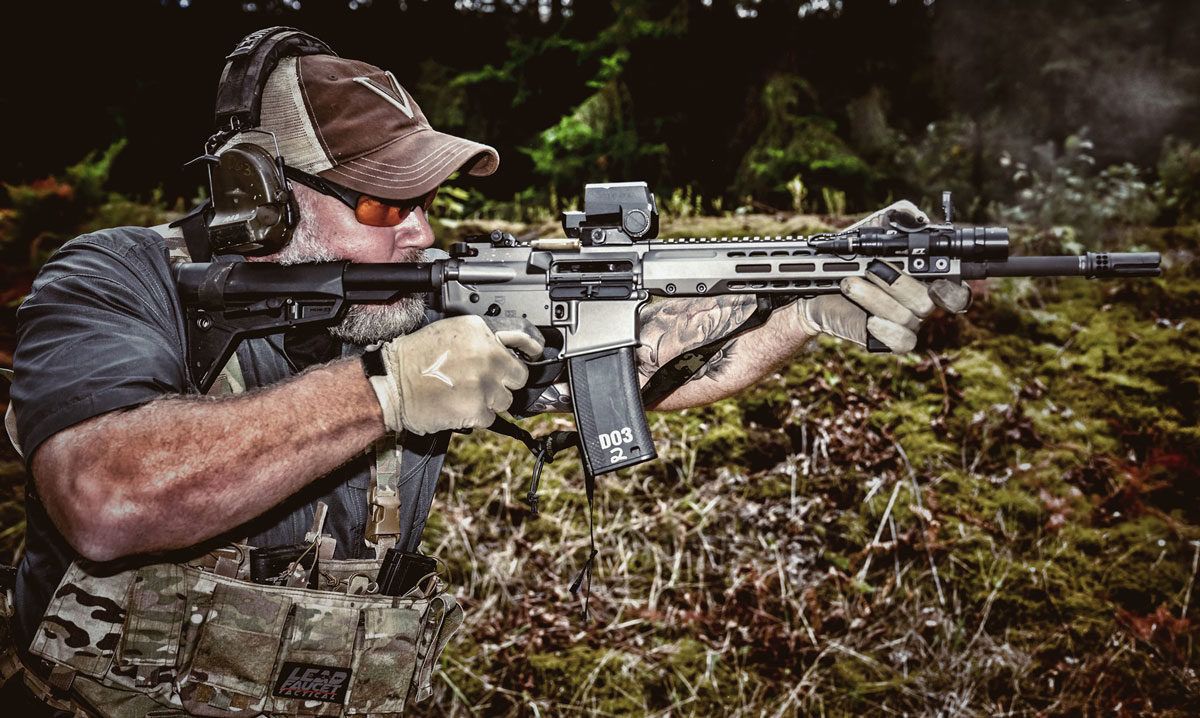
We recently sat down with Dan Brokos of Lead Faucet Tactical to discuss his very qualified and unique view of the AR-15. Brokos is one of the most knowledgeable and respected trainers in the firearms industry, and has an extensive history with the platform in the field and on the range.
Q: Dan, you’re someone we’ve wanted to interview for a very long time now. Can we start with a very brief background?
Dan Brokos, Lead Faucet Tactical – I retired with 27 years in the military…21 in the SOF community, 98 percent of that time was in the Crisis Response Force, which augments the Tier 1 units out there. We had to be assault-capable…very driven, very good shooters, and good at PT.
My only two breaks were spent where SF has a school house called Range 37. There, I was the NCOIC in charge of advanced marksmanship, CQB and breaching.
Then, I went operational again. I later came back, and then I was the Sergeant Major at that same school house…I was then in charge of the assault side of the house, and the sniper course.
With that experience, I’ve been involved with guns and tactics for 21 of those years straight. There was never any staff or admin time. I was always either operational, deployed, or at the school house when my time was up and I took a break.
Q: In your career, you spent a lot of time with the AR platform. Can you describe your journey with the AR-15 over the years?
Dan Brokos, Lead Faucet Tactical – In my case, I would just say that all the changes I have been a part of with the AR platform have been for the better. I understand that people get used to one platform, but the fact is, you have to evolve.
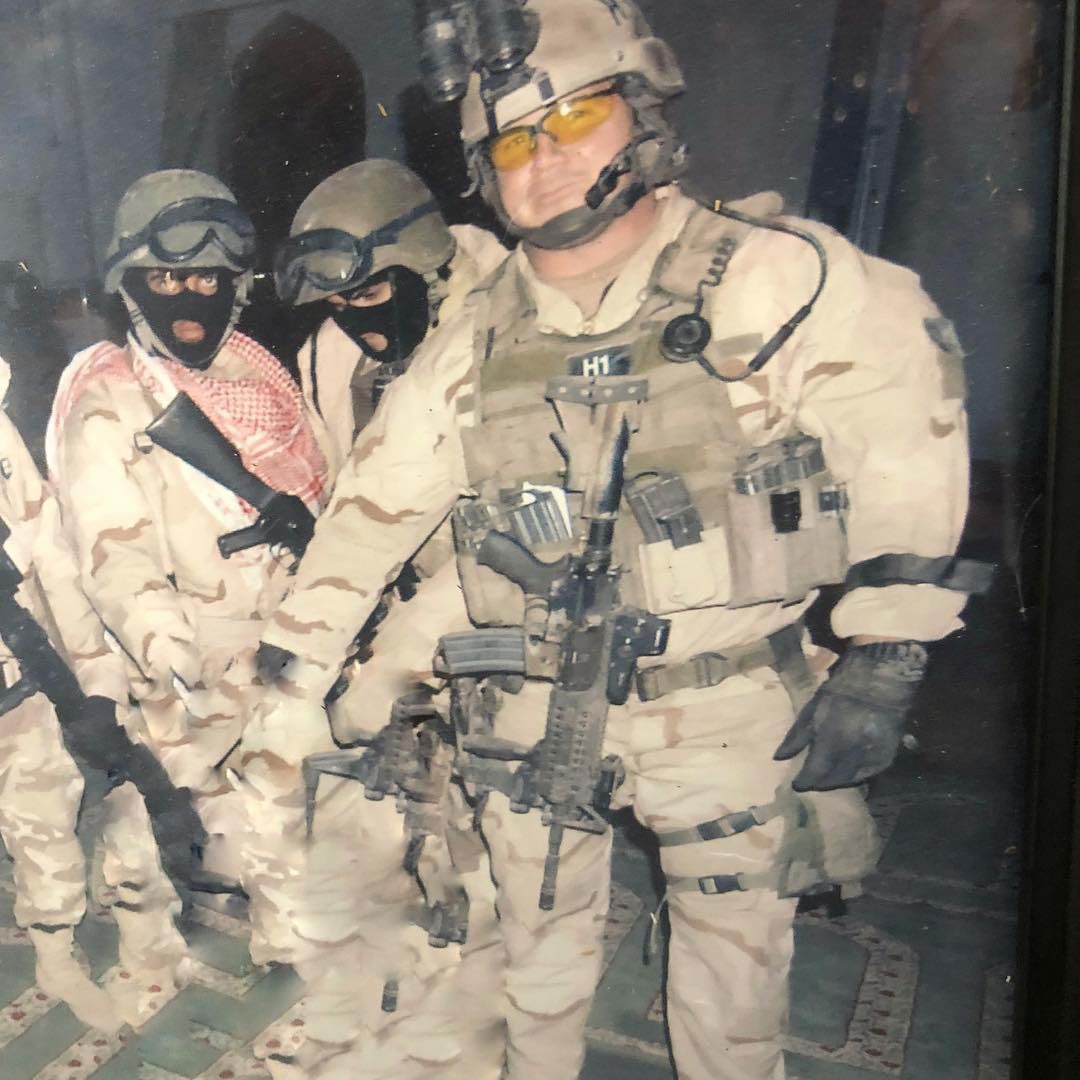
When I first started in this business, it was a fixed carrying handle with an Aimpoint 5000 on top and about a 5” rail. There’s no “shootability” in that compared to what we have evolved to today. We’ve gone from plastic handguards to a quad-rail to a free-float rail. Now we’re running a 14.5” gun with a 12” rail with a mid-length gas system. Everything has evolved around “shootability”.
We’ve gotten so many lessons from war over the years, just shooting all of the time…it’s important to note that not only has the AR evolved, but our shooting stance and how we control the weapon has evolved along with it. I think it’s on an equal plane because “shootability” is just as important as functionality when it comes to putting rounds downrange effectively.
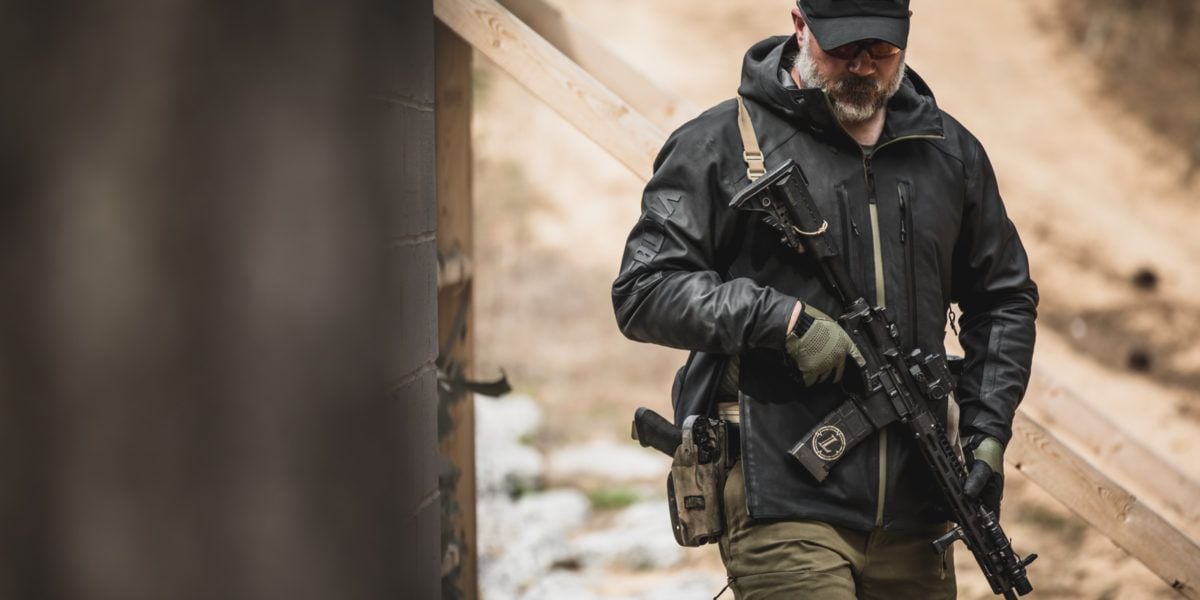
Q: Can you talk about how small changes you’ve seen with the AR can make a big difference?
Dan Brokos, Lead Faucet Tactical – If you look at the years where we first had a quad-rail, that was huge for us. Then we went with a quad-rail that went past the front sight post. With that change, I could then take my light and laser and kick it all out there further.
What that meant is that now I could get my support hand out there a lot further than when it was tucked right behind the magazine well. What did that do? It allowed me to drive the shit out of that weapon.
I always say “drive the gun, don’t let the gun drive you.” Along with that, I always shoot like you are shooting a ten round string. That’s because people don’t drop after two rounds. Sometimes it’s ten and sometimes it’s an entire magazine. So yeah…just getting extended controls and getting that support hand out there was huge for us.
Q: Triggers would also be a huge change, correct?
Dan Brokos, Lead Faucet Tactical – Yes…the second big thing other than the rail system we have now was triggers. Now, there’s nothing wrong with an issued trigger, but when we went to our Geissele 2-stage combat trigger, nothing too light, about 4.5 to 5.5 pounds, it was huge just as far as our marksmanship and accuracy…not only up close but out to range as well.
It’s a huge difference pulling a good trigger over a stock trigger time after time after time. People will ask “what’s the most important piece of an AR?” I say it’s the trigger.
That said, there’s always a learning curve. Someone will say “Hey Dan, try this new trigger…” To that I always just say, “Guys, I’m good.” I know what trigger I like, and even my competition guns have had that same trigger in them for the last five years because I can’t compete and then go back and teach and have a huge disparity in triggers. That’s how important I feel that piece of kit is on an AR.
Q: Can you talk some of the changes we’ve seen with sights and optics over the past few years? What optic do you currently prefer on your rifle?
Dan Brokos, Lead Faucet Tactical – I’m a huge LPVO guy. With my background where I was at, we were the test hub for USASOC. We’d have meetings, and every time something was tested, it was out there. The next gen 1-6, 1-8…that is coming through the SOF community, that started with us testing a bunch of the reticles that were out there.
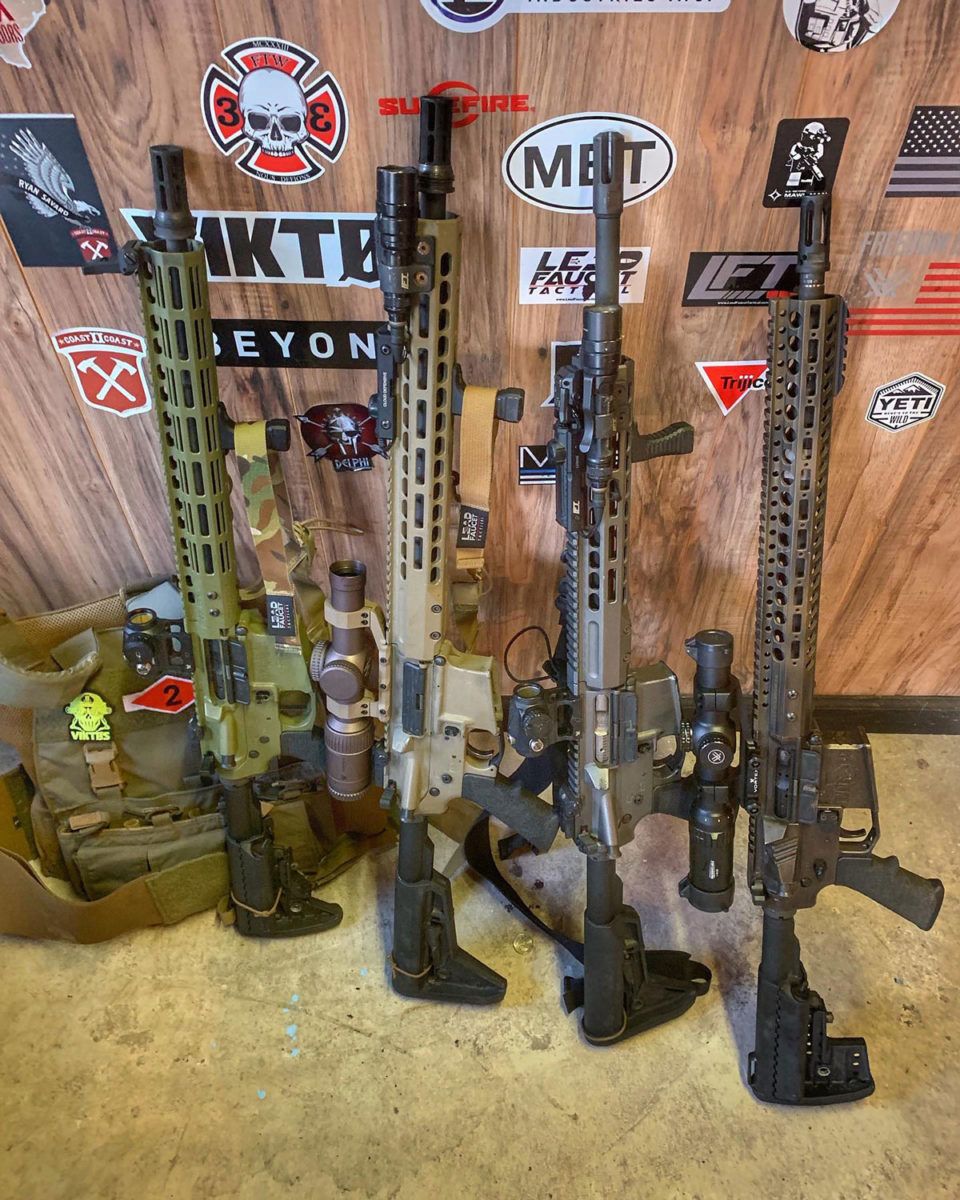
I still think the red-dot is a great tool, but I like a 1-6 or 1-8 variable power optic…but it’s kind of stringent. I see a lot of horseshoe reticles, and this is my personal opinion, but you go back and look what the SOF community demanded, it was an LPVO with a red dot reticle, not a horseshoe, not a chevron. We want at least a 2 MOA reticle in that LPVO so it can be used like Eotech or an Aimpoint, but then I can also flip it 6x or 8x when needed..
Q: I know a few people who have purchased LPVOs but end up going back to red dots. Are they missing something or is it just preference thing?
Dan Brokos, Lead Faucet Tactical – I think going from iron sights, to red dots to LPVOs, a lot of guys give up too quick on the LPVO. They’ll say they’re not as fast. They need to understand that may be true at first, but overtime with repetition, they’ll get there.
Q: What considerations should we be thinking about if we want to get into an LPVO?
Dan Brokos, Lead Faucet Tactical – There’s a lot out there. Here’s the thing. You get 10 guys in a room in my community, and you’re going to get 10 different answers. For us, to streamline the process, we first looked at what an LPVO had to have. We all agreed that it had to have a red dot…no chevrons, no triangles. It needed to have a red dot in the dead center so that when I am on 1x, I have a red dot that I am communicating with.
Second thing was we went back and forth on ballistic reticle or MILRAD reticle. I would say in general between Vortex, Kahles, Steiner, Leupold, Primary Arms, Sig Sauer, Nightforce, what the criteria comes down to is red dot, basic reticle, eyebox, and field of view. Personally, I am pro Vortex Razor HD 1-6. It has what I want…and it’s what works the best for me.
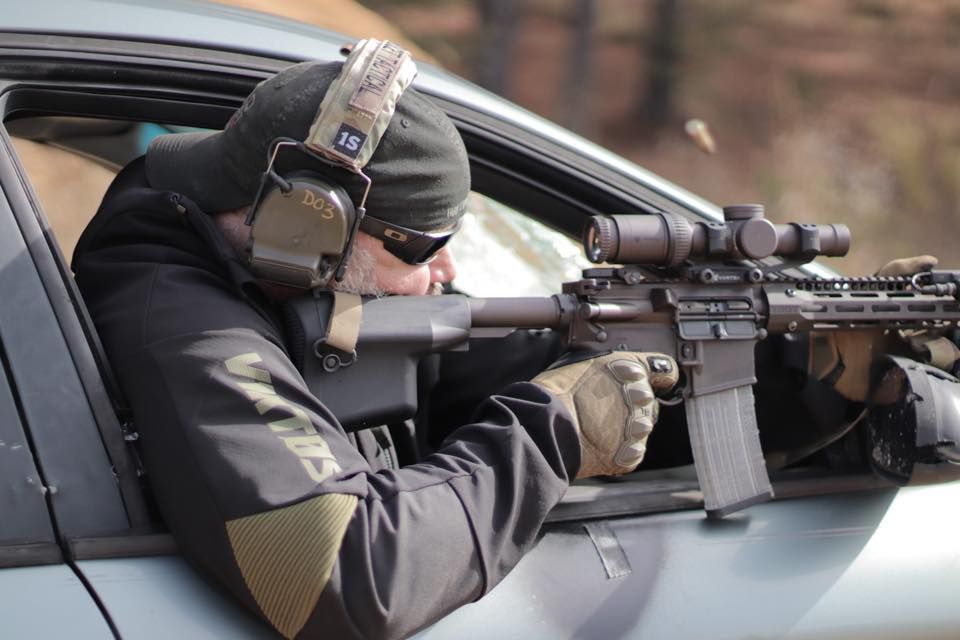
Q: Criticism I’ve heard repeatedly about the Vortex is that it is heavy. Is that overhyped or does it not bother you?
Dan Brokos, Lead Faucet Tactical – It is heavy, but I know I can drop that thing off of a roof top or off of a ladder and it’s going to be good-to-go. There are other optics that are much lighter than the Vortex that are out there. Kahles is lighter and the glass is awesome…The new Sig Sauer I got my hands on before I left is pretty damn good too, and it is light.
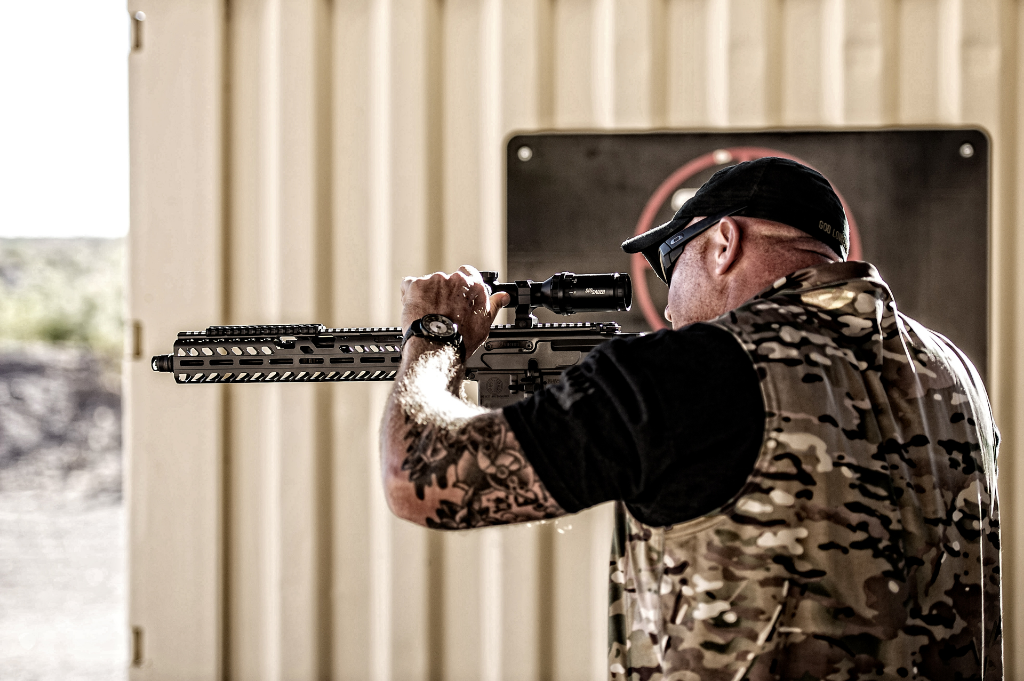
Q: There’s so many things, optics included, where we can’t always tell if it’s the real deal or if we’re in danger of falling victim to marketing hype. Any advice you can give us?
Dan Brokos, Lead Faucet Tactical – I think if it works for you, it’s good. I’ll be honest, there’s a few companies coming up like Holosun that I had not heard of until I retired. I was a bit wary, but then I got a few of them and now I’m like “man, these are badass.” If they don’t break during the course of your training, then I’d just say that if you like it, run it.
“It’s a lot like buying a new car…”
If you’re not having any problems with impact shift or parallax or some of the temperature related changes that we had with the Eotech, then go for it.
Here’s the thing…it’s a lot like buying a new car. You just can’t just buy a new car and not take care of it, and then blame Chevy because your shit fucked up and you never did any research, and you never changed the oil.
If you buy something, man, that’s on you to keep track of “What’s my round count? Have I changed my batteries? Am I testing for parallax? Am I confirming my zero every Friday?” A lot of the guys out there will just blame the optic instead…it’s the same with blaming the vehicle, if that makes sense.
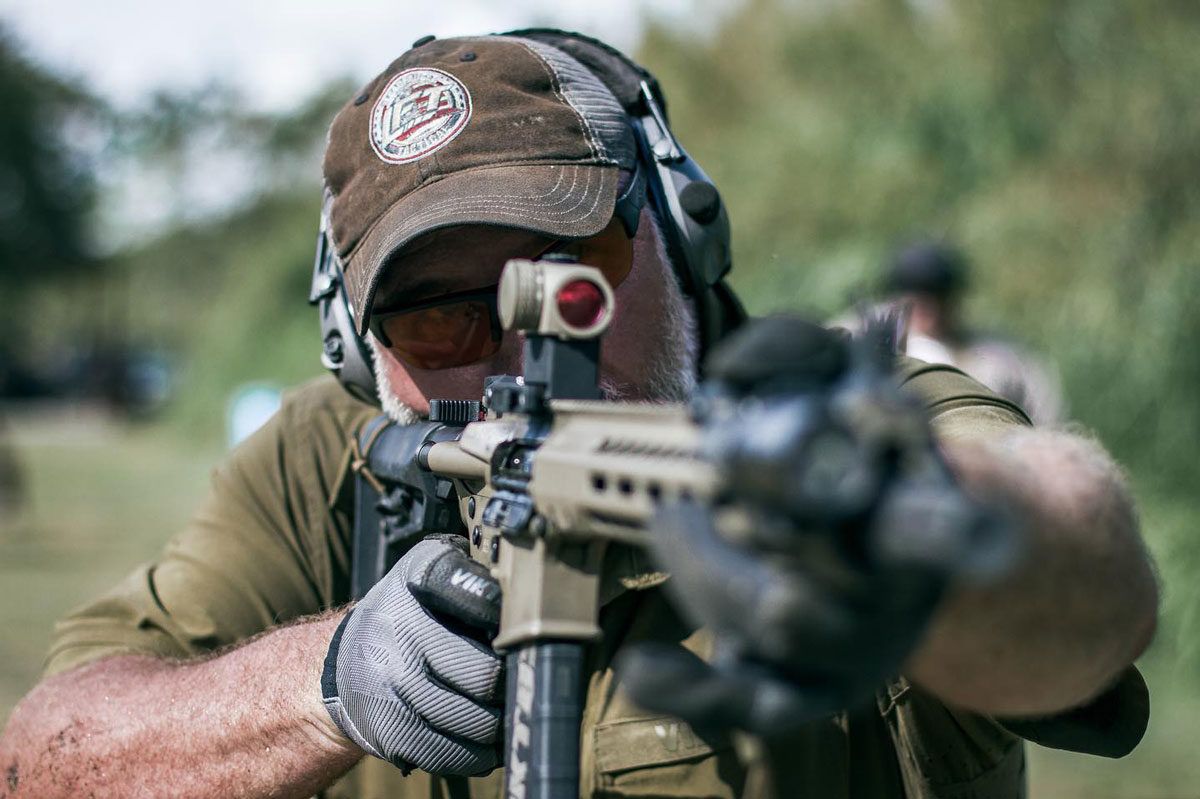
Q: Talk a bit about the training that you do at Lead Faucet Tactical, and misconceptions the uninitiated need to get clarity on?
Dan Brokos, Lead Faucet Tactical – I train a lot of LE, military and civilians. My biggest thing is “do not get caught in a CQB world.” People ask what that means. It means stop running the El Prez at 10 meters with your carbine and 5 meters with your pistol. That’s all I did prior to the war because we didn’t know any better. We figured we were going to assault a house and that’s all we would need to do.
There’s a lot of misconceptions about being able to fight out at distance. You need to be able to fight ambidextrous, from strong and support side. You have to minimize exposure and maximize cover. I think you need to be able to run your carbine 80% on your support side. That’s because if I am a right-handed shooter and I am on the left side of something, I need to be shooting left-handed.
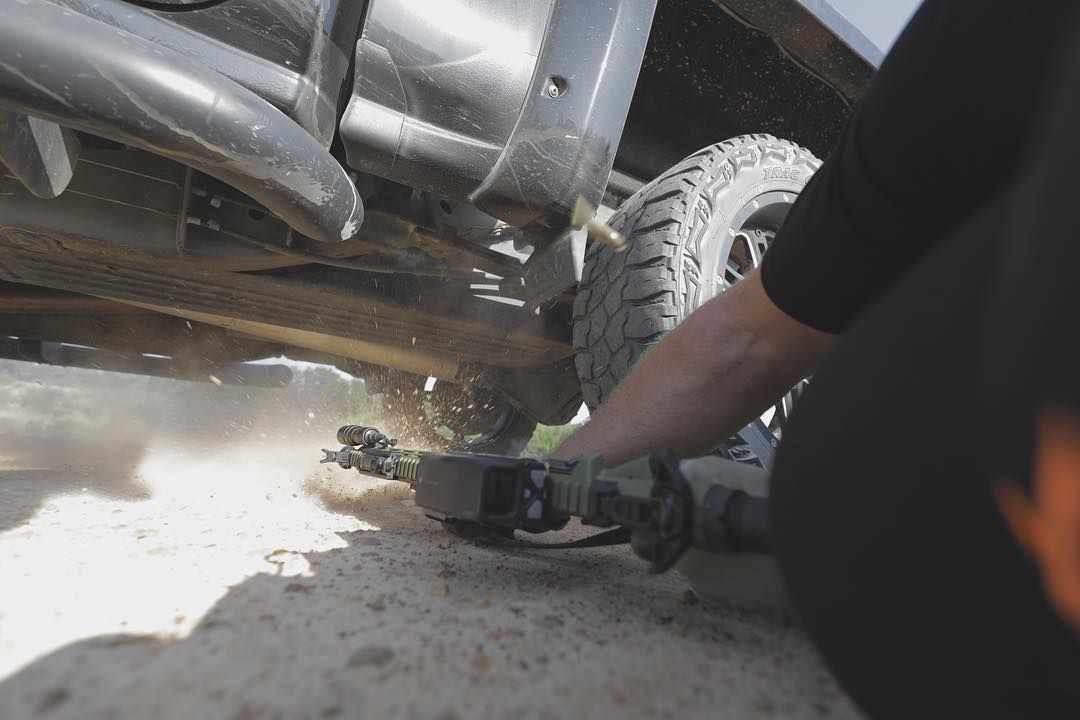
“Focus on the contingencies…”
If I am in a vehicle and I am driving and shit happens, I need to be able pull that thing on my support side and get busy on the left-hand side. If I am a left-handed shooter, it’s vice versa.
You also need to focus on the contingencies that are out there…shooting with one arm, one eye…these are all things that need to be addressed on the range before it happens in reality.
“Be prepared for 10”
The biggest thing though is, as I mentioned earlier, you have to shoot like you are shooting a 10-round string. Two shots may not do anything to anybody. Don’t be prepared for two. Be prepared for 10. That is a huge difference in recoil management, grip and stance.
Also, know that recoil management is the key, NOT how fast I can pull the trigger. It’s how much recoil I can manage. Do I want my sights lifting three inches or do I want them lifting a half inch? If it’s half an inch, that means I’m also smooth on the trigger, and my shots are going to be there that much quicker.
Q: Can you give us a brief overview of some of the things you cover in your Lead Faucet Tactical carbine courses?
Dan Brokos, Lead Faucet Tactical – My two or three day carbine classes cover everything from being ambidextrous with the carbine, to stance, to multiple targets, to shooting on the move.
I’m also a huge fan of fighting in and around cover or half-assed cover. All of my carbine courses have a day and a half of barricades, and I use vehicles as props.
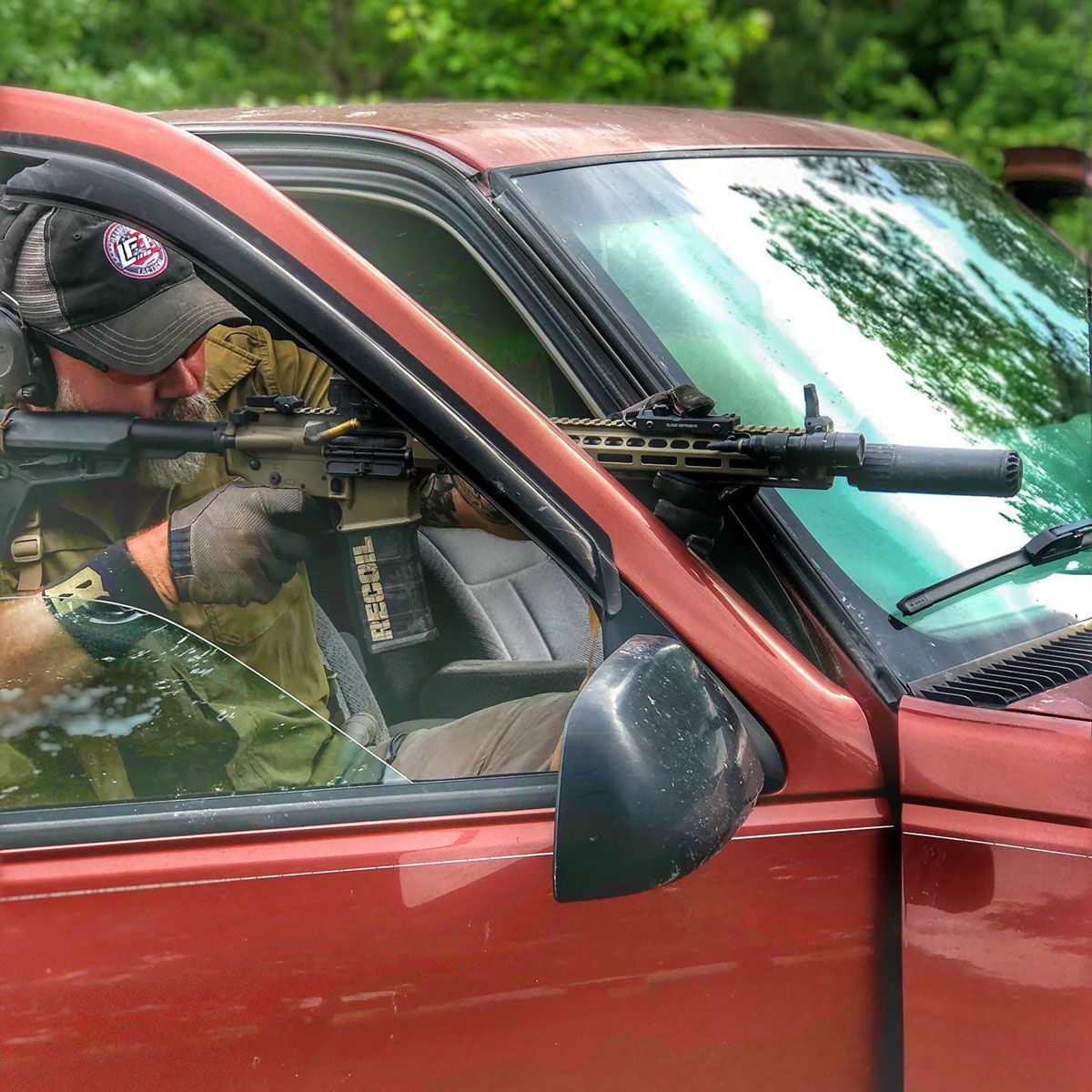
I also have an Urban Gunfighter course. It’s about fighting in and around vehicles but it’s also about contingencies like me putting a glove over their right hand and they can only fire with their middle finger, or perhaps all they have to use is their thumb.
Regardless of what class your readers are interested in, I’d just share that I absolutely live to train people. Everything that was passed down to me by professional shooters, I want to share. I’m not here to hoard that information. I’ll give it to you in a heartbeat.
Q: Can you talk about what to expect in one of your courses? I think sometimes people miss out for fear that they are not “good enough.”
Dan Brokos, Lead Faucet Tactical – I have people call up and say “Hey Dan, I want to attend but I don’t have a carbine. Could I still attend?” I say “hell yeah you can.” (laughs).
We start with “here’s what a carbine is, here’s how it functions.” We then get into zeroing…by day three, you’ll be running around barricades and vehicles. It’s a crawl-walk-run two or three day course. I love having civilians in the course. They want to soak up knowledge. You don’t have to have any training to attend one of my courses, you really don’t.
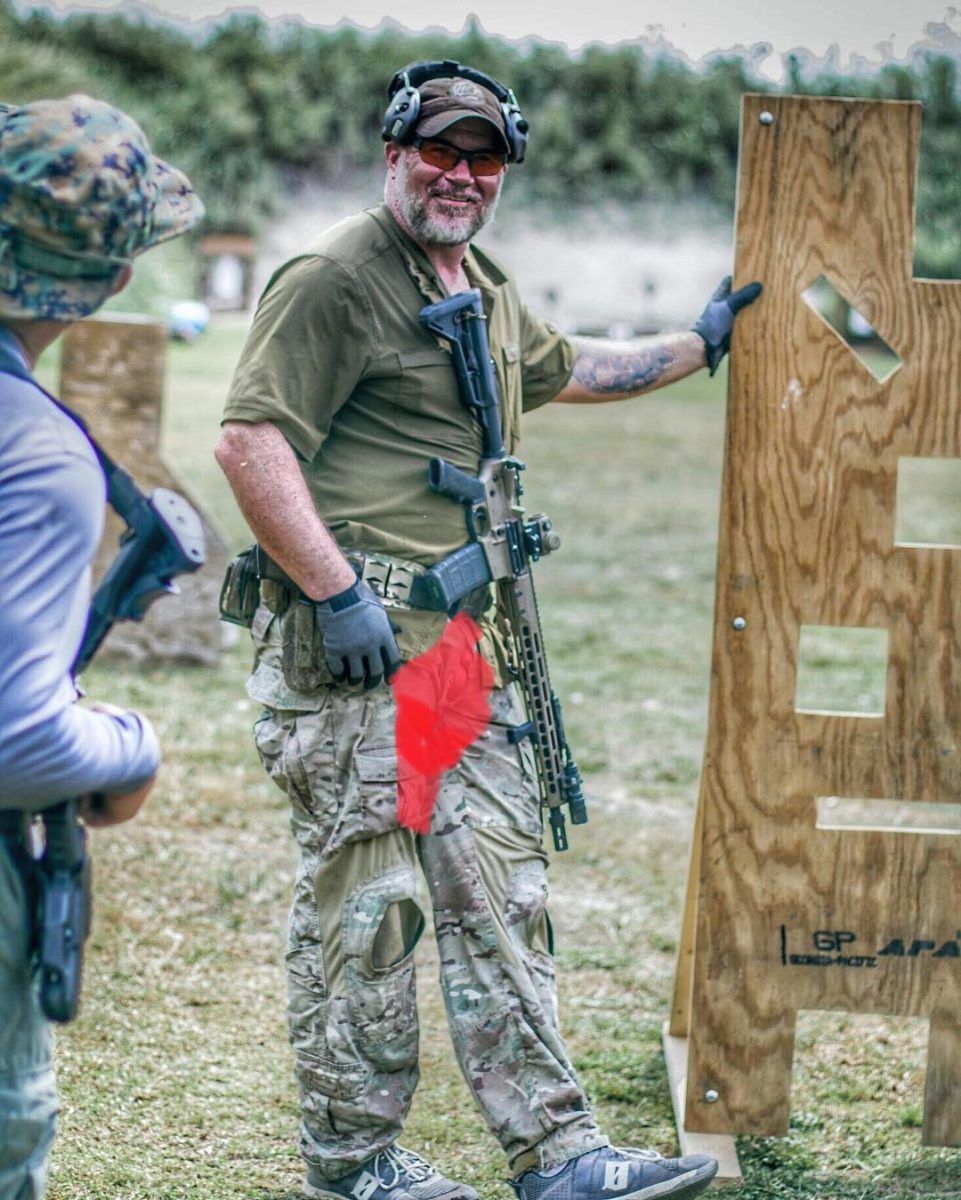
I do run a safe range. Everybody gets along. I’m in the customer service business and I treat that seriously. I want people to have a good time. It’s about shooting and having fun, and I’ve learned how to really articulate that over the years. Being an instructor and teaching a bunch of SF dudes has paid off. We have learned how to really articulate things to people at all different levels…as such, I’d encourage you our your readers that if they are on the fence they should just come on out and give it a go.
I think courses like these are also a great way to meet people. You get to hang out…it’s like a guy’s vacation. (laughs) Instead of going on a three-day fishing trip, why not go on a three-day shooting trip and meet a bunch of neat people?
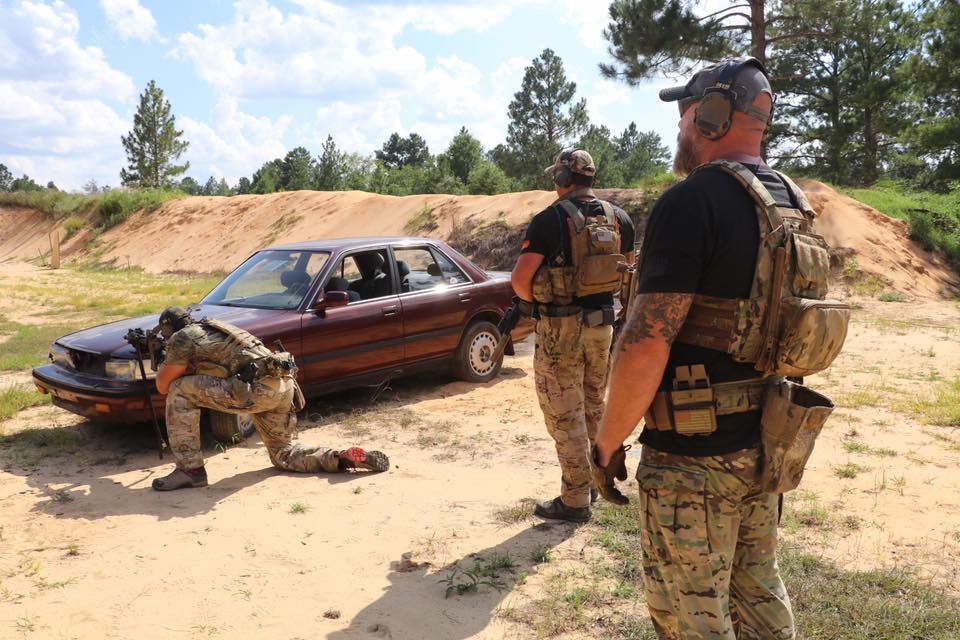
Q: Before we go, can you talk about what you look for in an AR build today?
Dan Brokos, Lead Faucet Tactical – What I look for in a carbine? I’ll tell you first off that I am not a 10” fan. We had them and I thought they were cool, but I have to go back to shootability. You can’t get much when you have a 10” gun and a 7” rail, especially when you’re running a light and a laser.
I am a 14.5” type of guy. I am also a proponent of getting a lot of rounds thru them. Reliability and functionality, especially in a dirty environment, is what I look for…not that it’s a good looking gun. I need to know that I can throw it in the damn mud and pick it up and then it will function for 20-30,000 rounds. I’m horrible at maintenance, but that’s a good test for my guns, because if they can function after that, then I know they are built very well.
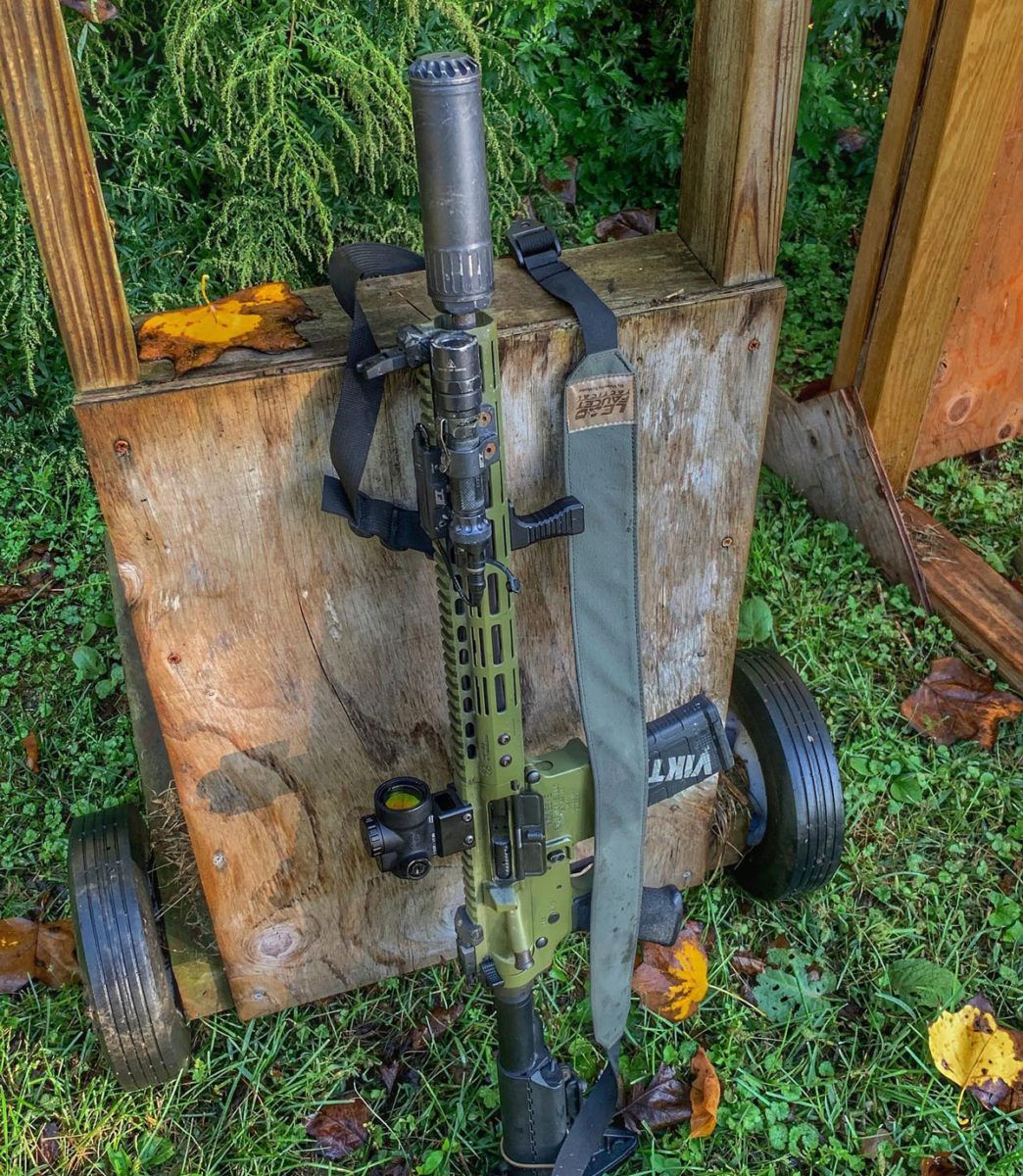
Q: At the risk of asking a dumb final question, what does “reliability” mean to you. I ask because I see the term tossed around by people who claim to have a reliable gun, but I sometimes don’t think they know the definition.
Dan Brokos, Lead Faucet Tactical – First off, I need to say that people need to pay attention to their triggers. Don’t go too light. Get a nice combat trigger. I’d also advise people not to mess with their buffer system. Finally, they need to have a good barrel. A bolt carrier group is a bolt carrier group. A rail is a rail. A lower is a lower. Let’s face it, I have Frankenstein guns that if I throw in an FB barrel and a Geissele trigger, that thing is going to run until the end of time.
Don’t fall for the after-market stuff. Just use what’s reliable or known and then build or buy what you want.
To answer your specific question though, I’d say that if you’re having malfunctions with anything below 6,000 rounds…you should be able to get 6,000 to 10,00 rounds from a gun without any problems at all. If you are, you need to take a really close look at what the components are that you’ve put inside that weapon.
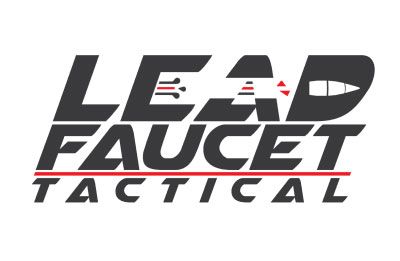
###




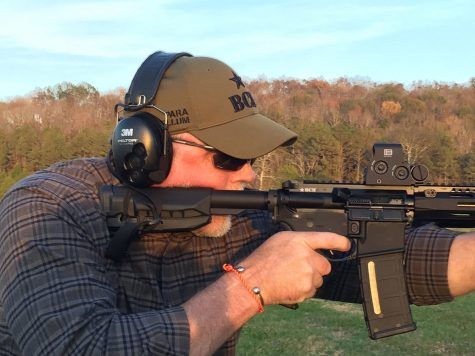
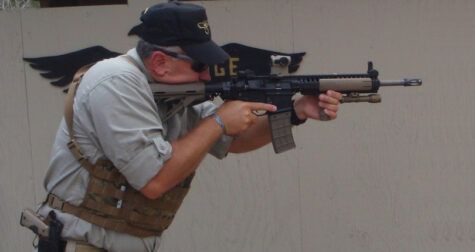
“I have Frankenstein guns that if I throw in an FB barrel and a Geissele trigger, that thing is going to run”.
Could you clarify the “FB” barrel, please?
Dan Brokos class has been one of the best courses I have ever taken. It is fun and you learn a ton. Shooting from different positions and learning how to make proper adjustments for different shooting scenarios. Highly recommend it.
Good sound article, makes me want to train with this guy